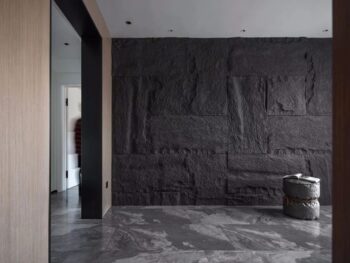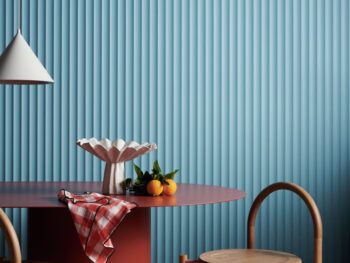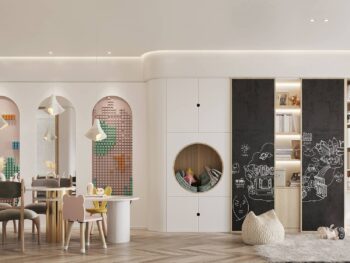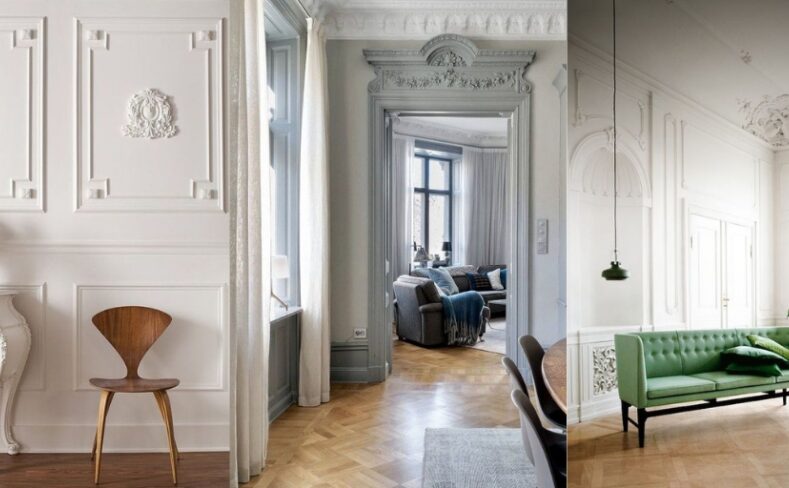
What Is Wall Trim and 5 Kinds of Introduction
I. What is wall trim?
Wall trims are decorative frames around doors, windows, and walls that can add an attractive design touch to your room while covering seams, gaps, and other imperfections in surfaces. While certain types of wall decor feature simple styles, there are also a variety of options available with intricate details that will suit both traditional and contemporary homes.
Popular accents such as baseboards and crown molding are found in many architectural designs. For an elevated look, homeowners can opt for personalized accents such as chair rails, picture frames, or even moldings that mimic built-in frames on the wall.
In addition to installing different types of moldings, wall trims can be easily customized by changing colors to match your home. White trim contrasts with dark walls, giving these rooms a formal, traditional look. On the other hand, dark accents can be used to create a bold, eye-catching contrast against light-colored walls.
II. 5 common types of wall trims
Here, explore 5 common types of wall trims and their features to refresh your space.
1. Chair rail
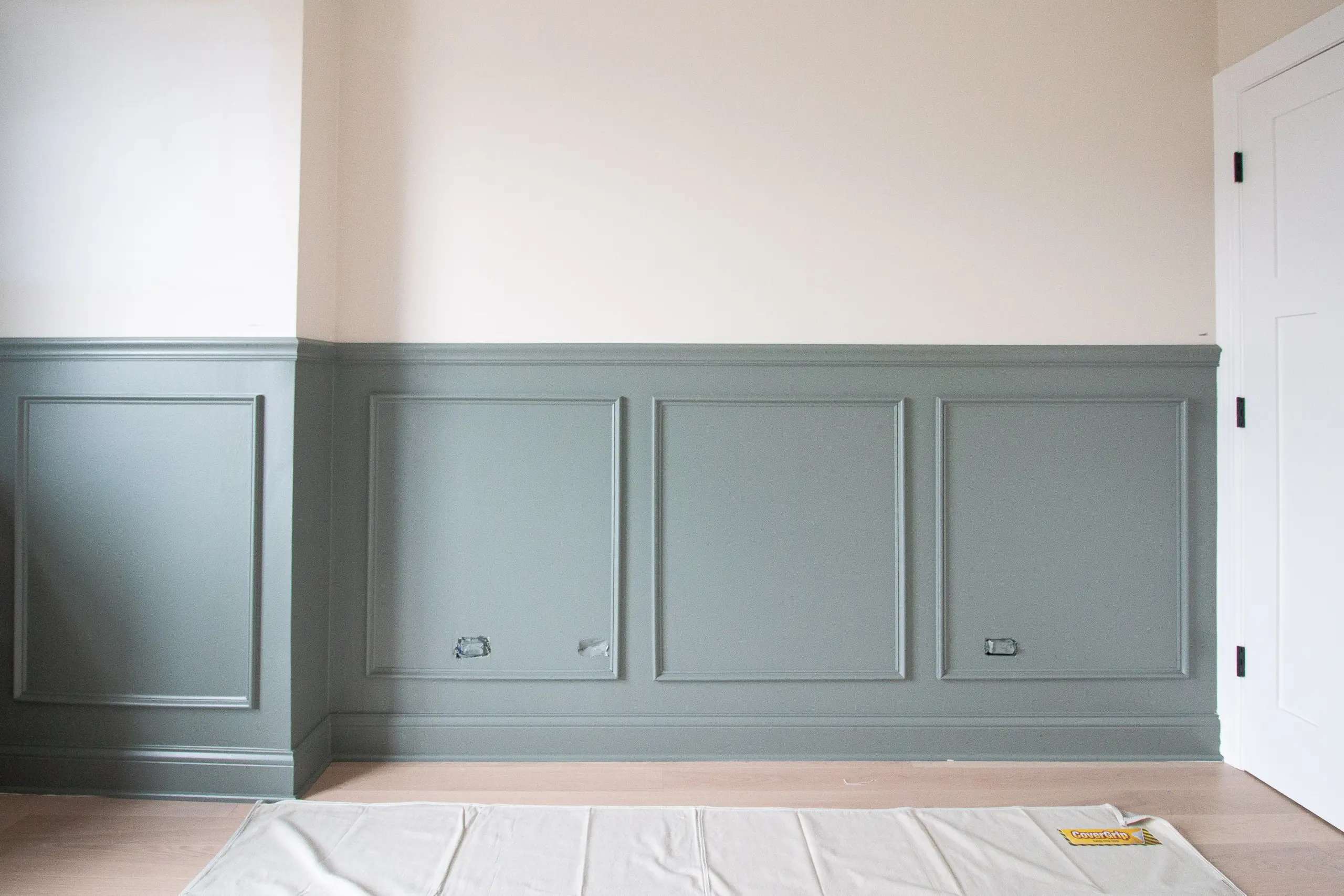
Source: https://thediyplaybook.com/how-to-add-chair-rail/
Best suited for: Dining rooms or any room with lots of chairs
A chair rail is a horizontal decorative piece that is typically installed 3 to 4 feet off the floor. These railings were originally used to protect walls from chairs, usually in restaurants. Chair rails are most commonly used as moldings today and typically cost around $1-2 per linear foot.
Chair rails are functional as well as aesthetically pleasing and are often used in conjunction with lower wainscoting, designed to protect walls from furniture damage. Together, these elements are great places to contrast moldings with wall paint for a classic look. Hardwood and polyurethane options offer the most durability—but regardless of the material, homeowners should be aware that chair arms are prone to dust accumulation. Since this trim is at eye level, it may require more frequent cleaning than baseboards or crown molding.
Following the original concept, chair rails are common in restaurants. While chair rails are great for adding character and protecting your walls from wear and tear, they attract dust, which means they need regular cleaning.
The great thing about chair rails is that you can have two different finishes on two different parts of the wall. You can paint the two sections different colors, or add decorative-style wallpaper to one half of the wall and paint the other half. Or sketch out two different types of wall trims—paint and wallpaper, for example. Chair rails allow you to unleash your creativity and add an elegant look to any room.
2. Crown
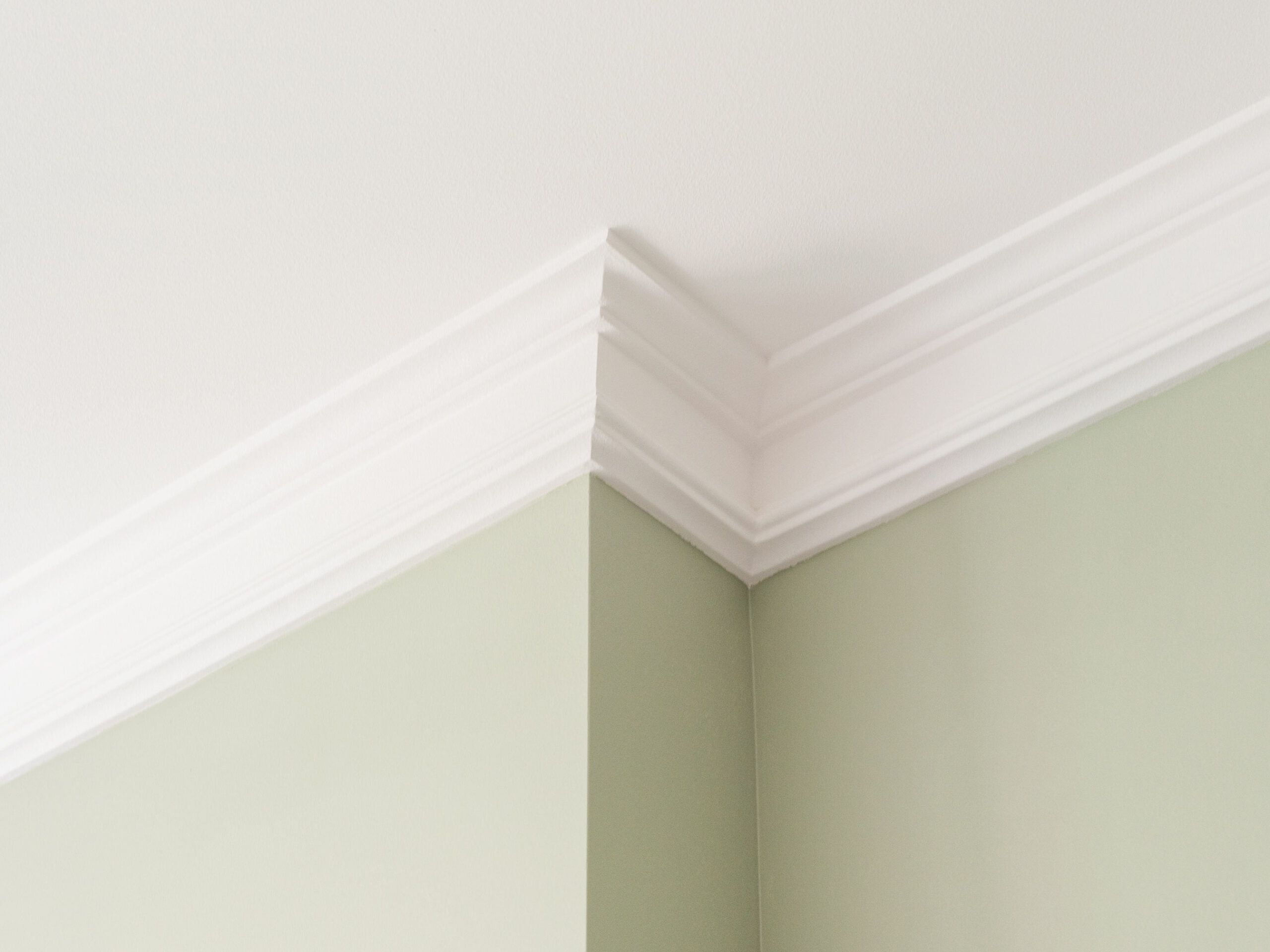
Source: https://www.thisoldhouse.com/crown-molding-design-ideas
Best suited for: Living rooms, dining rooms, and other public rooms
Crown molding is just what you think it is – an overhead crown that shines in the space where the walls and ceiling meet. Also known as cornice molding, often possessing a complex profile, it may be delicate, with decorative cutouts, or simple and linear in design (Shaker).
Crown molding occurs where the wall and ceiling meet and is usually installed at a 45-degree angle with a hollow space behind it. Often associated with upscale or historic homes, crown molding is the perfect finish to bring a classic feel to your main living areas. Unlike other types of wall trims, which tend to be made of wood, modern crown molding is often made of lightweight materials like wood, vinyl, or PVC.
When installed properly, crown molding is a durable piece of trim that should resist moisture and last for decades. Do-it-yourself homeowners can save time perfecting the drywall grout on the ceiling by covering it with crown molding, but cutting tight, seamless installation angles can be difficult. Hiring a finishing carpenter may help achieve an attractive result without blemishes. The purchase cost of crown molding is about $2-3 per foot, which may increase to $8-10 per foot if a carpenter is hired.
If you plan to incorporate crown moldings into your home, be sure to match them to your baseboards (if you have one) to create balance. Typically, rooms with high ceilings will need thicker moldings to stand out, while lower ceilings should use thinner moldings. For rooms with 8-foot ceilings, crown molding should be no higher than 6 inches. For spaces with 10-foot ceilings, use moldings about 8 inches high to make the room feel proportionate.
The molding, which hides imperfections, can be installed on walls and ceilings to enhance visibility from below, adds Home Depot millwork senior merchant Jeff Valenti. There are hundreds of patterns and styles to choose from across many architectural eras, including Corinthian, Doric, Modern and Art Deco.
3. Baseboard and baseboard styles
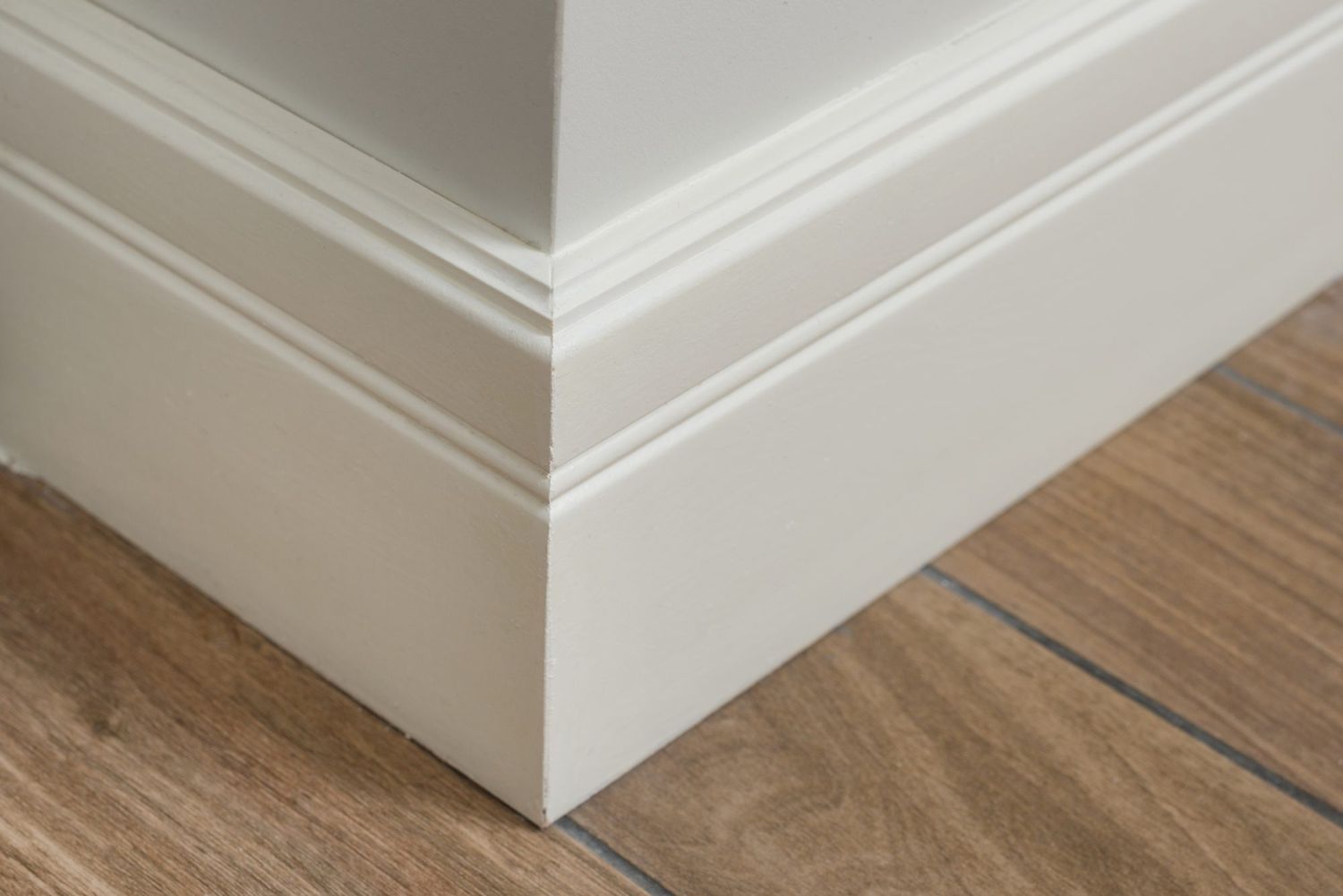
Source: https://www.marthastewart.com/how-choose-baseboards
Best suited for: Every room in the house
Baseboards are the most common type of trim in a house, decorating a room and serving as a defining line at the bottom of a wall. They also hide the gap between the bottom of the wall and the floor. Often used where the floor meets the wall, this look is both aesthetically pleasing and functional. For starters, it makes the transition between floors and walls more seamless, especially when the two are drastically different in color, finish, or texture. Baseboards help disguise uneven surfaces and also protect walls from slamming doors and cabinet damage. The mold doesn’t need to be the same color—it can also be made of tile, plaster, or wood.
Baseboards range from short and narrow styles to baseboards 6 inches or larger and are found in many older homes. Installing baseboards typically costs about $0.60 per foot for MDF options and $1.20 for natural wood or PVC.
When installed close to the floor (especially when a quarter circle is added), baseboards prevent drafts from entering the house. However, they may end up with gaps near the floor. Repositioning the quarter circle, shoe molding, or baseboards themselves can solve this problem for the convenient homeowner.
Tips
If you plan to paint the trim, you can use MDF or plastic trim. MDF is one of the cheapest trim materials you can buy. Plastic is more expensive, but more durable than MDF, which breaks easily. Other advantages of plastic polymers are that they are lightweight and waterproof.
4. Picture frame wall molding
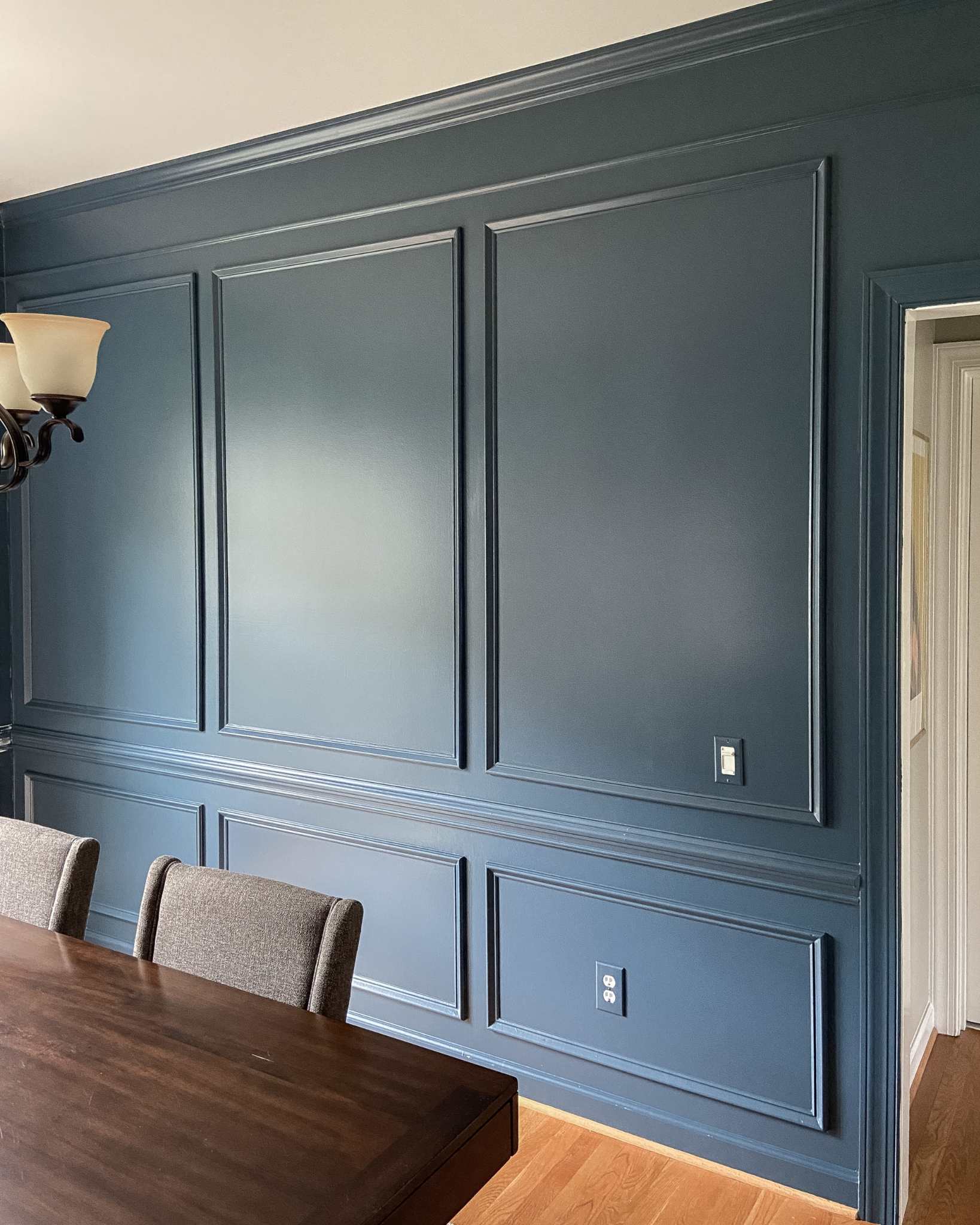
Source: https://whatbbbuilt.com/picture-frame-molding/
Best suited for: Formal public rooms, such as dining rooms or living rooms
Wall-mounted picture frame moldings are purely decorative and typically four pieces of molding are installed to create the appearance of a picture frame. This wall element is less common than other types of decor, but it is an attractive and unique style that can be found in many historic homes and formal designs. Prefab cubes typically cost between $8 and $25 and are usually made of wood or polyurethane. The moisture and mildew resistance of polyurethane makes it a more durable choice.
Moldings can be painted a different color from the walls for contrast, or the same color to add texture and depth to the space. It’s a unique look that few homes have – plus, it’s super easy to build. Adding picture frame wall moldings is one of the quickest and easiest ways to add an elegant look to a room.
A picture frame wall is a less functional form of decorative molding that consists of lines of equal size to create a framed look. Picture frame moldings are usually located on the lower half of the wall below the arm of the chair. They give a home a formal, elegant look and may come in handy for those looking for a little more refinement in their home.
Picture frame moldings are as they appear—square or rectangular, and look like blank pictures. They add a clever level of detail to the walls of hallways and stairs. Adding picture frame moldings can mimic paneling on an otherwise flat wall. Frame molding can also be used on ceilings to mimic a tray or coffered ceiling.
5. Picture rail
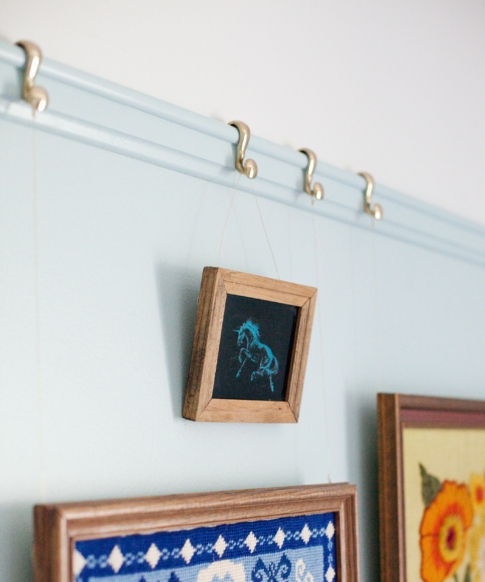
Source: https://abeautifulmess.com/installing-picture-rail-moulding
Best suited for: Living and dining rooms, bedrooms, hallways
A picture rail is similar to a chair rail in that it rests horizontally around the perimeter of the room. However, it mounts much higher on the wall and has a different profile than the arm of the chair. More unique than other types of trim, picture poles traditionally function as fastening hooks for hanging pictures with wire. Wood and plaster are the most common choices, with wood being lighter and less likely to crack over time. Depending on the materials used, painted rails typically cost between $1 and $2 per foot.
Functionally, picture rails allow you to easily move pictures in and out of rooms. Aesthetically, it can help break up the monotony of a room with a high ceiling. Because of its high position, it can interfere with windows, so homeowners should take care to measure the space above each window before installing.
Picture rails allow you to hang art frames without having to drive nails directly into the wall. Often combined with crown molding, this type of molding is 1 or 2 inches tall and appears to be 7 to 9 feet off the ground.
Similar to a chair rail, a picture frame is another decorative piece that is half-hung on the wall. However, picture rails are usually placed higher—1 or 2 feet below the ceiling. These moldings allow you to hang pictures without damaging your walls. Instead of hammering nails into the wall, nail them directly to the rail, which is a flat plate that attaches to the wall, and hang the art on it. Another type of painting rail is a pole from which you can use wire or rope to hang artwork.
These types of moldings are a good choice if you are changing the hanging art on a regular basis rather than letting the same art hang for years. A picture rail is perfect for spaces where pictures are commonly hung, such as bedrooms, living rooms, and family rooms. They also make great decorations for hallways. If hanging art isn’t your thing, a picture rail can still be an attractive decorative element to frame a space.
Quick Quotation

